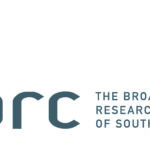 Consumers are interacting with media content in more sophisticated ways, accessing content on multiple devices, and at any time. In light of this, a new reading currency was required to achieve an accurate measurement of reading behaviour across multiple platforms to enable the buying and selling of advertising.
Consumers are interacting with media content in more sophisticated ways, accessing content on multiple devices, and at any time. In light of this, a new reading currency was required to achieve an accurate measurement of reading behaviour across multiple platforms to enable the buying and selling of advertising.
 “The outcome is PAMS (Publisher Audience Measurement Survey),” says Peter Langschmidt, consultant to the PRC (Publisher Research Council). “The most complete measurement of reader audiences, across all platforms, to inform effective advertising investment.”
“The outcome is PAMS (Publisher Audience Measurement Survey),” says Peter Langschmidt, consultant to the PRC (Publisher Research Council). “The most complete measurement of reader audiences, across all platforms, to inform effective advertising investment.”
The reading currency provides an innovative “Gold Standard” Reader Audience Measurement founded on global multi-country best practice, combined with 40 years of local trial and experience.
An important inclusion is a tighter new reading measure, in PAMS, known as Core readers. According to Langschmidt, this unique measurement developed by the PRC, is included to reduce the effects of memory decay inherent in the recency method, where the longer the issue period, the harder it is for respondents to remember whether they read the publication within the issue period. In other words, it is easy to remember a newspaper read yesterday, but it is much more difficult to remember if a monthly magazine was read four or five weeks ago.
To qualify as an “Average Issue” reader of a paper/print publication, a person has to have last read or paged through any copy of the publication within a period no longer than the issue period of that title. For example, to qualify as an average issue reader of a weekly print publication, a respondent has to have read or paged through an issue of that title within the past 7 days.
The Average Issue Readers (AIR) are arrived at using this “within issue period” recency method. Core Readers are calculated using a formula based approach called the FOR (Frequency Over Recency) methodology, which overlays frequency of reading (number of different issues normally read) on top of the traditional recency AIR. Many different approaches using time spent reading, origin of copy and other metrics were examined, but the ‘frequency of reading’ question provided the best solution as it reduces monthly magazine readers by more than it does dailies, where the recency method works better.
The table below shows the average reductions in PAMS 2017 between the recency method calculated AIR and CORE Readers.
| Category | Core Reduction vs AIR |
| Daily Newspapers | -27% |
| Weekly/Weekend Newspapers | -32% |
| Weekly Magazines | -40% |
| Monthly Magazines | -55% |
The FOR method uses the number of issues frequency probability and multiplies these by the number of AIR readers at each frequency level as shown in the table below. For example, daily newspapers use a 5-issue frequency scale as there are five issues published from Monday to Friday.
THE FOR METHODOLOGY
Frequency Group
| Probability (A) | AIR Readers (B) | CORE Readers (AxB) | |
| 1 out of 5 Issues | 0.2 | 120 | 24 |
| 2 out of 5 Issues | 0.4 | 115 | 46 |
| 3 out of 5 Issues | 0.6 | 95 | 57 |
| 4 out of 5 Issues | 0.8 | 158 | 126 |
| 5 out of 5 Issues | 1 | 212 | 212 |
| Total Readers | 700 | 465 | |
“We’re confident that the new reading currency PAMS, and in particular the CORE readers measurement will provide an accurate reflection of reading behaviour across all platforms that the media industry can use in research and of course, the buying and selling of advertising,” concludes Langschmidt.
To find out more information regarding definitions and the questionnaire, please see:
http://www.prc.za.com/wp-content/uploads/2018/04/PAMS-2017-Technical-Report.pdf
PAMS documentation and all bureau contacts are available on the PRC website at http://www.prc.za.com/pams/.
- MRF Unveils Latest MAPS® Data - 20th February 2025
- The BRC announces changes to the board and updates for 2025 - 17th December 2024
- Top 50 DSTV TV programmes – October 2024 - 12th November 2024



